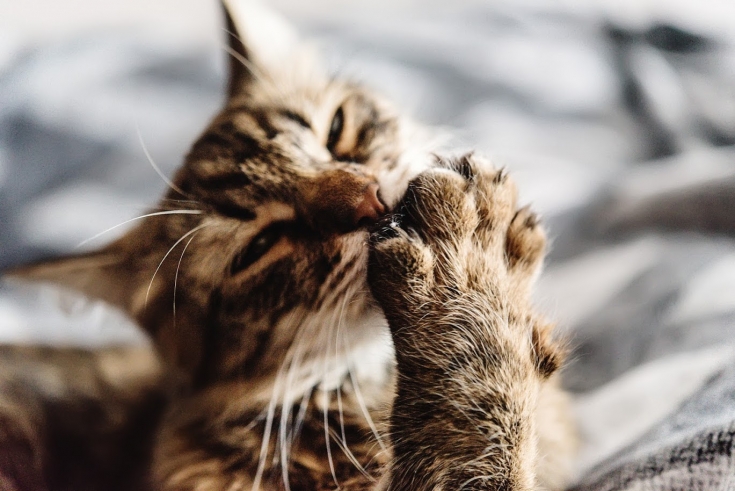Cat-scratch disease, also known as "felinosis" – zoonosis caused by Bartonella due to contact transmission of pathogens to humans from domestic or wild cats. This disease was first described in 1889, when the French neuropathologist and ophthalmologist Parini recorded a fever in a patient against the background of follicular conjunctivitis and regional parotid lymphadenitis. But only 60 years later, the pediatrician Derbe described in detail the typical manifestations of cat scratch disease in humans and gave this condition its modern name.
Today, felinosis is the cause of annual medical visits for 25,000 US citizens. According to the World Health Organization, this disease is widespread among the population in our time. Read more about modern methods of diagnosing and preventing cat scratch disease on estet-portal.com in this article.
How does a human become infected with cat scratch disease
Mechanism of transmission of cat-scratch disease – contact.
The pathogen enters the human body through cat bites and scratches.
Felines become infected with Bartonella through contact with fleas that carry the pathogen. After the bacteria enter the human body, they are transported to the regional lymph nodes, causing their specific inflammation. Read more about the clinical variants of the course of felinosis in the article Cat scratch disease: what are the consequences of a dangerous neighborhood.
Cat-scratch disease: modern methods of diagnosing the disease
In most cases, the diagnosis of cat scratch disease – clinical and epidemiological . Anamnestic data indicating the patient's contact with a domestic or wild cat, as well as the presence of scratches, characteristic papules and regional lymphadenitis are grounds for establishing a diagnosis. But in cases of atypical course of felinosis the diagnosis of the disease can be difficult. Then there is a need to use specific methods for diagnosing cat scratch disease.
They include:
- Serological methods: RNIF (indirect immunofluorescence reaction method), ELISA (enzymatic immunoassay);
- Determination of Bartonella DNA by PCR (polymerase chain reaction).
A single determination of the titer of antibodies to Bartonella using serological methods in the amount of 1:512, as well as their increase by 4 or more times over two weeks, confirms the diagnosis of felinosis. Identification of the DNA of the pathogen by PCR is also irrefutable evidence of the presence of felinosis in a patient.
Follow us on Telegram

Cat scratch disease: treatment and prevention of the disease
The expediency of prescribing antibiotic therapy for felinosis should be determined by the doctor in each individual case. Mild variants of the course of cat-scratch disease are often not the basis for etiotropic treatment. In such cases, it is sufficient to use non-steroidal anti-inflammatory drugs as symptomatic therapy. With suppuration of the affected lymph node, there is a need for surgical intervention.
For the etiotropic treatment of cat-scratch disease, the following schemes should be used:
- Azithromycin: 500 mg once daily on day 1, 250 mg once daily from days 2 to 5 of treatment;
- Doxycycline: 100 mg once a day, the duration of administration is determined by the doctor individually, but should not exceed 21 days.
- Ciprofloxacin: 250 mg twice a day for 5-10 days.
In the case of severe variants of the course of cat-scratch disease, it becomes necessary to combine different antibiotic agents, as well as their parenteral administration.
There is no specific prevention of felinosis. Keep your pets clean and take appropriate action if they are infected with fleas. Cat scratches and bites should be washed immediately with soap and water and treated with disinfectants.
Thank you for staying with estet-portal.com. Read other interesting articles in the "Dermatology" section. You might also be interested in: The danger of walking barefoot and a simple scratch on the skin.







Add a comment